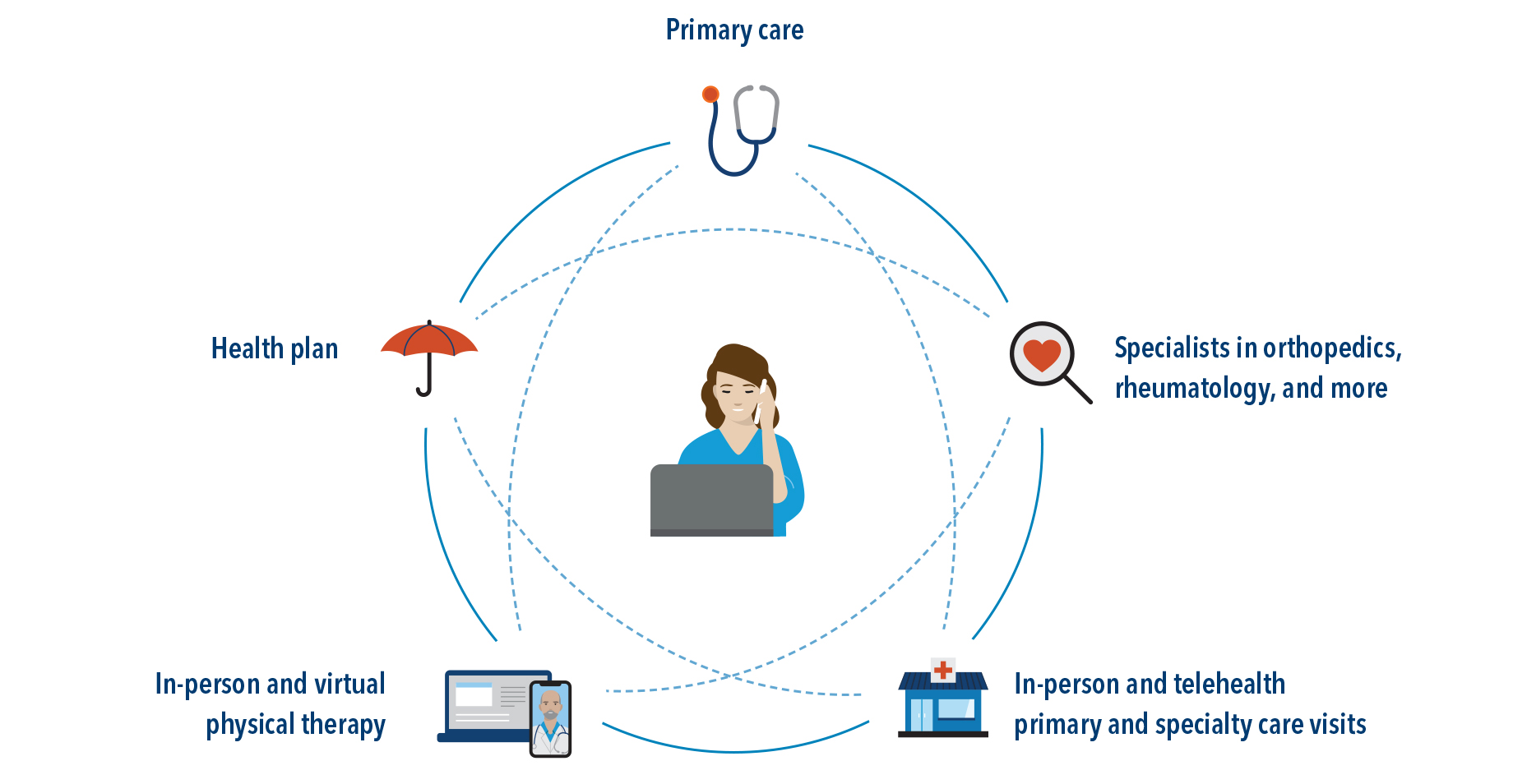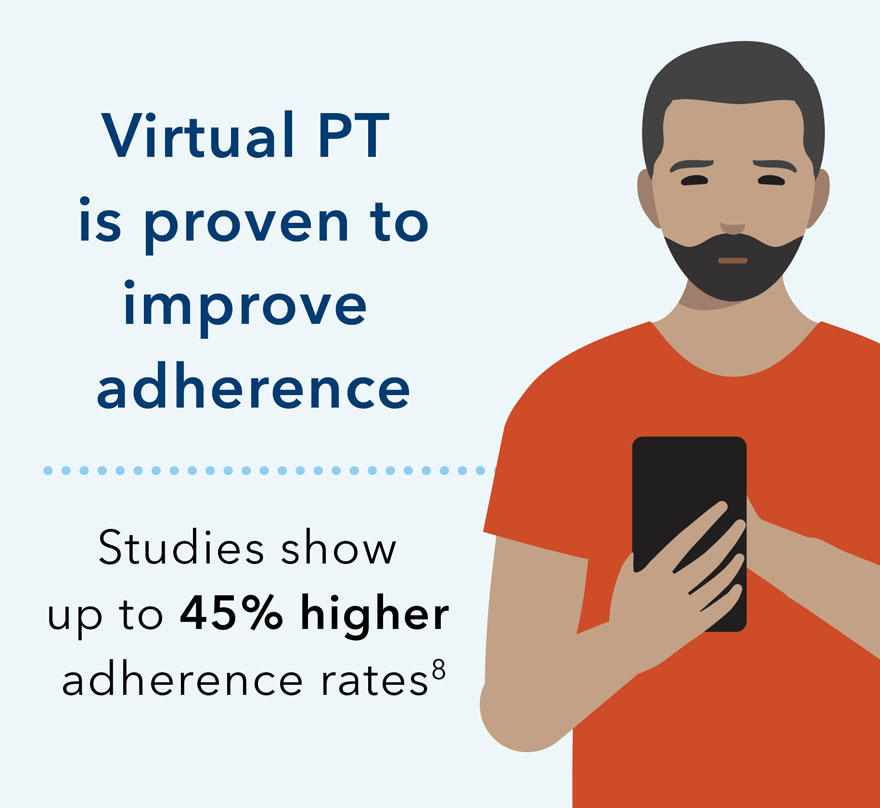Coordinated and connected musculoskeletal care
Most musculoskeletal conditions can be prevented — and treated successfully — with the right care and support. At Kaiser Permanente, your employees’ care plan is available in one connected system that’s designed to make life easier and recovery faster.







DID YOU KNOW?
Nearly 40% of employers are considering adding third-party virtual musculoskeletal care benefits in 2022.9
At Kaiser Permanente, virtual PT is built in — at no additional charge.